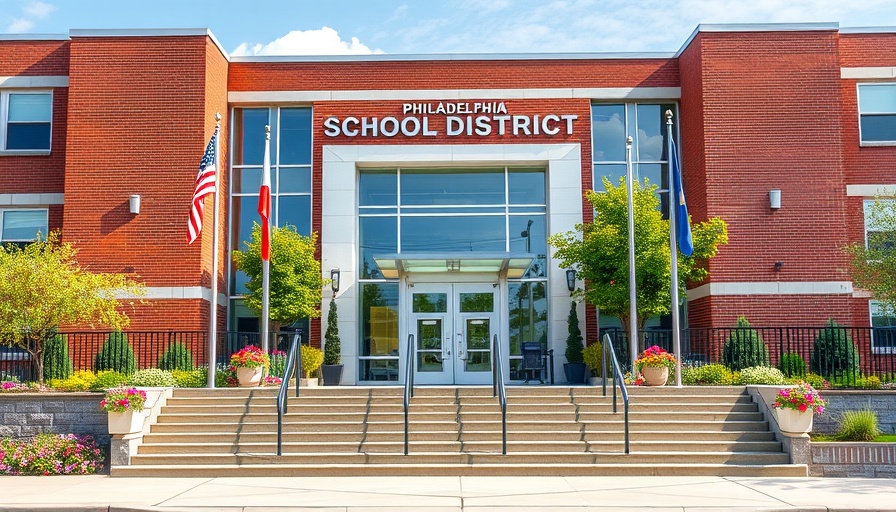
Understanding the Implications of the Court's Ruling on School Liability
This week, a pivotal legal decision by the Commonwealth Court of Pennsylvania ignited a crucial conversation about student safety and the responsibilities of educational institutions. The ruling now allows a 10th grader, identified as L.F.M., to pursue legal action against the School District of Philadelphia for failures that led to her sexual assault by classmates. This historic interpretation of governmental immunity provides clarity on the extent of a school's obligation to protect students from harm, regardless of whether the offending individuals are school employees.
Why This Ruling Matters for Pennsylvania Families
The court's unanimous decision represents a significant shift in how Pennsylvania handles student-on-student sexual abuse, underscoring the vital necessity for comprehensive safety protocols within schools. Legal advocates argue this change empowers more victims, as it broadens the scope of who can be held accountable when neglect occurs. In an era where school safety is paramount, this ruling encourages parents and advocates to push for stronger safeguards and greater transparency regarding how schools handle allegations of abuse.
A Closer Look at Student Safety Measures
In the case of L.F.M., the details surrounding the incident shed light on a deeper issue affecting many schools today. During a gym class designed for students with disabilities, L.F.M. was cornered, assaulted, and threatened by two classmates. This incident raises pressing questions about the adequacy of supervision during activities, and what measures schools must implement to prevent similar tragedies. Advocates insist that schools must conduct thorough evaluations of their monitoring practices and ensure adequate intervention training for staff.
The Community's Role in Protecting Children
As Monique Braxton, spokesperson for the School District of Philadelphia, emphasized, the role of students and the community in maintaining safety cannot be overstated. Encouraging students to report any concerns is vital. Schools cannot operate in a vacuum; they must foster an environment where students feel safe discussing their experiences. This collaborative approach is evidentially a step toward preventing abuse and ensuring that protective measures are both effective and comprehensive.
Students, Parents, and Legislative Changes
This court ruling could lead to significant legislative discussions regarding student safety in schools. Advocates for educational reform stress that the case's implications should prompt lawmakers to consider updating existing regulations surrounding child safety in educational settings. The incidents that lead to such rulings highlight the dire need for systemic changes that prioritize student welfare above all else.
Future Trends in School Liability
Experts predict that the shift in liability may encourage other states to align their policies with Pennsylvania's evolving interpretations of accountability. The movement could catalyze a national dialogue about how educational institutions protect vulnerable populations, notably children with disabilities, who are often targets of bullying and abuse. As awareness grows, schools nationwide may find themselves re-evaluating their strategies to ensure they align with the legal expectations placed upon them.
Common Misconceptions About School Liability
A prevalent misconception is that schools are only liable for actions taken by staff members. The recent court decision challenges this idea, clarifying that schools can be held accountable for peer-on-peer incidents where negligence is established. This clarity is essential for victims and their families, offering a pathway toward justice and accountability.
Actionable Insights for Parents and Educators
As community awareness grows, it becomes pivotal for parents to engage actively with school staff regarding safety protocols. Educators, in return, must be equipped with training not only in supervision but also in emotional intelligence to detect bullying and abuse when they occur. Schools can implement robust reporting systems, conduct regular workshops on consent and boundaries, and involve parents in discussions on safety policies.
Conclusion: What Comes Next?
As the legal proceedings unfold following this decision, it's imperative for local communities to advocate for enhanced safety measures in schools. This ruling should serve as a catalyst for both empowering students and demanding accountability from educational institutions. It invites us all to reflect on our collective responsibility in safeguarding our children. Families must stay engaged, voice their concerns, and contribute to the discourse on necessary reforms.
 Add Row
Add Row  Add
Add 




 Add Row
Add Row  Add
Add 

Write A Comment